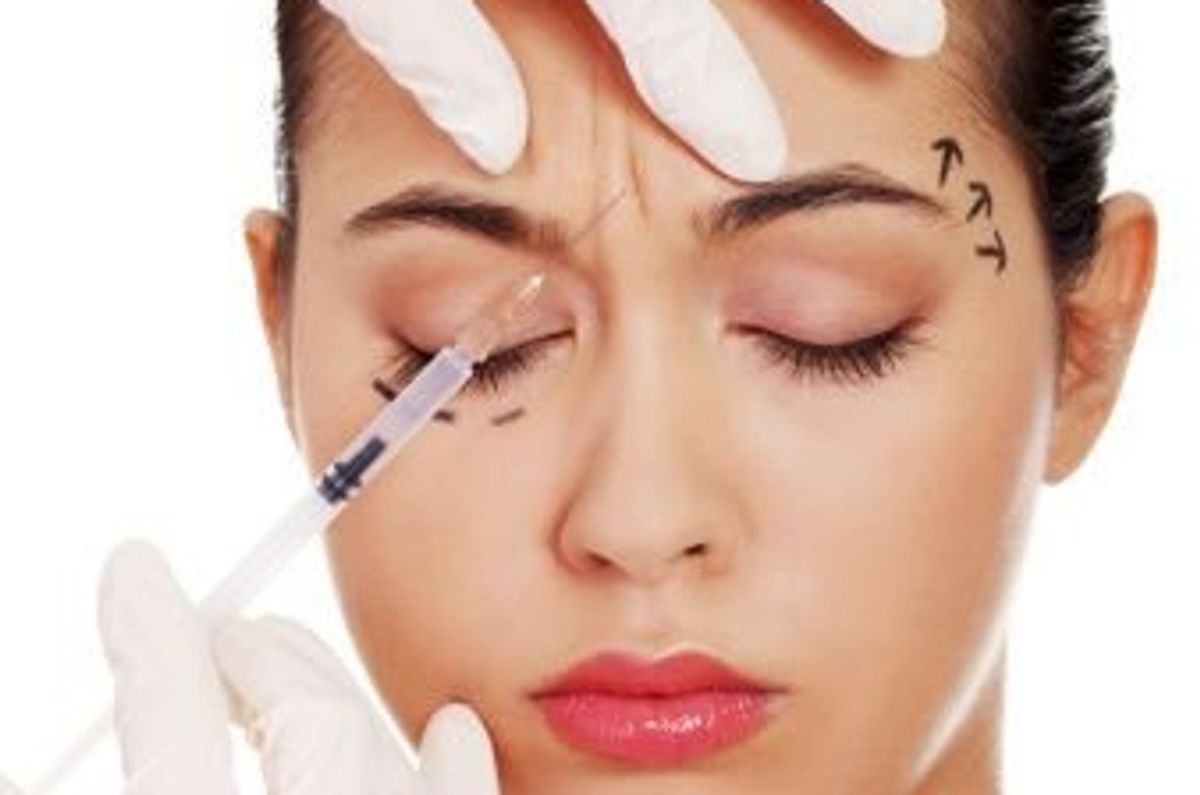

Sheryl Kraft
Sheryl Kraft, a freelance writer and breast cancer survivor, was born in Long Beach, New York. She currently lives in Connecticut with her husband Alan and dog Chloe, where her nest is empty of her two sons Jonathan. Sheryl writes articles and essays on breast cancer and contributes to a variety of publications and websites where she writes on general health and wellness issues. She earned her MFA in writing from Sarah Lawrence College in 2005.
Full BioLearn about our editorial policies
Medically Reviewed
When you hear someone has gone for Botox injections, do you assume they're doing it all in the name of beauty? After all, the most popular use of Botox is as a cosmetic therapy—used to erase facial wrinkles by slightly relaxing the contraction of muscles.
Not always so. Aside from being approved by the U.S. Food and Drug Administration (FDA) to treat that age-old problem of eyebrow furrows (or apostrophes between the eyebrows, as I like to call the vertical lines that settle in after many years), Botox currently has the green light in approximately 85 countries for 25 different problems, including muscle stiffness in elbow, wrist and finger muscles; excessive underarm sweating; chronic migraines; and urinary incontinence.
READ: 3 Things You May Not Know About Botox
Botox, also called botulinum toxin type A, is made from a very small and purified form of botulinum toxin produced by the bacterium Clostridium botulinum. It is the single most poisonous substance known and also causes the life-threatening type of food poisoning called botulism.
Injections of Botox temporarily blunt chemical nerve signals to certain glands or muscles, thus reducing their activity. And its use for wrinkles and frown lines was, much like many other medical discoveries (penicillin and Viagra among them), discovered quite by accident.
Back in the early 1800s, several dozen Germans who ingested improperly prepared blood sausages met their final fate. Dr. Justinus Kerner took on the sausage, even injecting himself with some to see exactly what it was that killed so many. What began to emerge were neurological links to food-borne botulism, like drooping eyelids, muscle weakness, difficulty with swallowing and even eventual paralysis and respiratory failure. Out of this physician's study came some helpful treatments for the prevention of food poisoning.
Fast forward to the 1950s, when researchers began to look for some other beneficial uses of the toxin. After purifying it into crystalline form and injecting small amounts of the toxin into muscle, scientists found that temporary "relaxation" was attained because it blocked the release of a neurotransmitter, acetylcholine, from motor nerve endings.
What followed were some "aha" moments: ophthalmologist Dr. Alan B. Scott tested the botulinum toxin on monkeys to see if the muscle-relaxing effects could treat crossed eyes (strabismus). It worked. Almost 20 years later he got the go-ahead from the FDA to inject human volunteers with tiny amounts.
More than one hundred years after the blood sausage poisonings, the FDA approved botulinum toxin type A to treat crossed eyes and twitching eyelids. Botox sales soon topped $1 billion. Since doctors are permitted to use approved drugs in unapproved ways, soon doctors around the country were racing to discover other uses, including treating chewing and swallowing problems, pelvic muscle spasms, drooling, hair loss, anal fissures and pain from missing limbs, according to the New York Times. It's estimated by some that as much as half of Botox sales come from off-label uses.
Seems counterintuitive that a poison would be used to treat so many medical problems. Some experts and health advocates feel that injecting our bodies with a toxin is approaching dangerous territory. They worry that doctors are widely adopting new and unusual uses for Botox before federal guidance and more thorough clinical studies are established. But others point to the long safety track record of Botox, based on 30 years of favorable research and studies on tens of thousands of people worldwide.
Despite the controversy, Allergan, a $14.5 billion specialty pharmaceutical company, owns or has applied for patents on more than 90 uses for the drug.
Some health insurers cover medical uses for Botox, but not usually for cosmetic treatments.
It's quite amazing, don't you think? Botox has had quite an interesting metamorphosis. Consider how it all began—with a bad piece of sausage.
What's next for this potential wonder drug? Research continues. I do believe that the biggest moneymaker of all would be to find a way to use Botox to help people lose weight.
Until then, a study has come out about a benefit to clinically depressed patients. By getting rid of the frown lines on their faces with Botox, their depressions actually lifted.
Perhaps it might it be easier (and lighter on the wallet) to remember to smile more.
You might also want to read:
Lines and Wrinkles Be Gone!
Fixes for Aging Skin: A Top NYC Dermatologist Shares the Latest
You might be interested in





